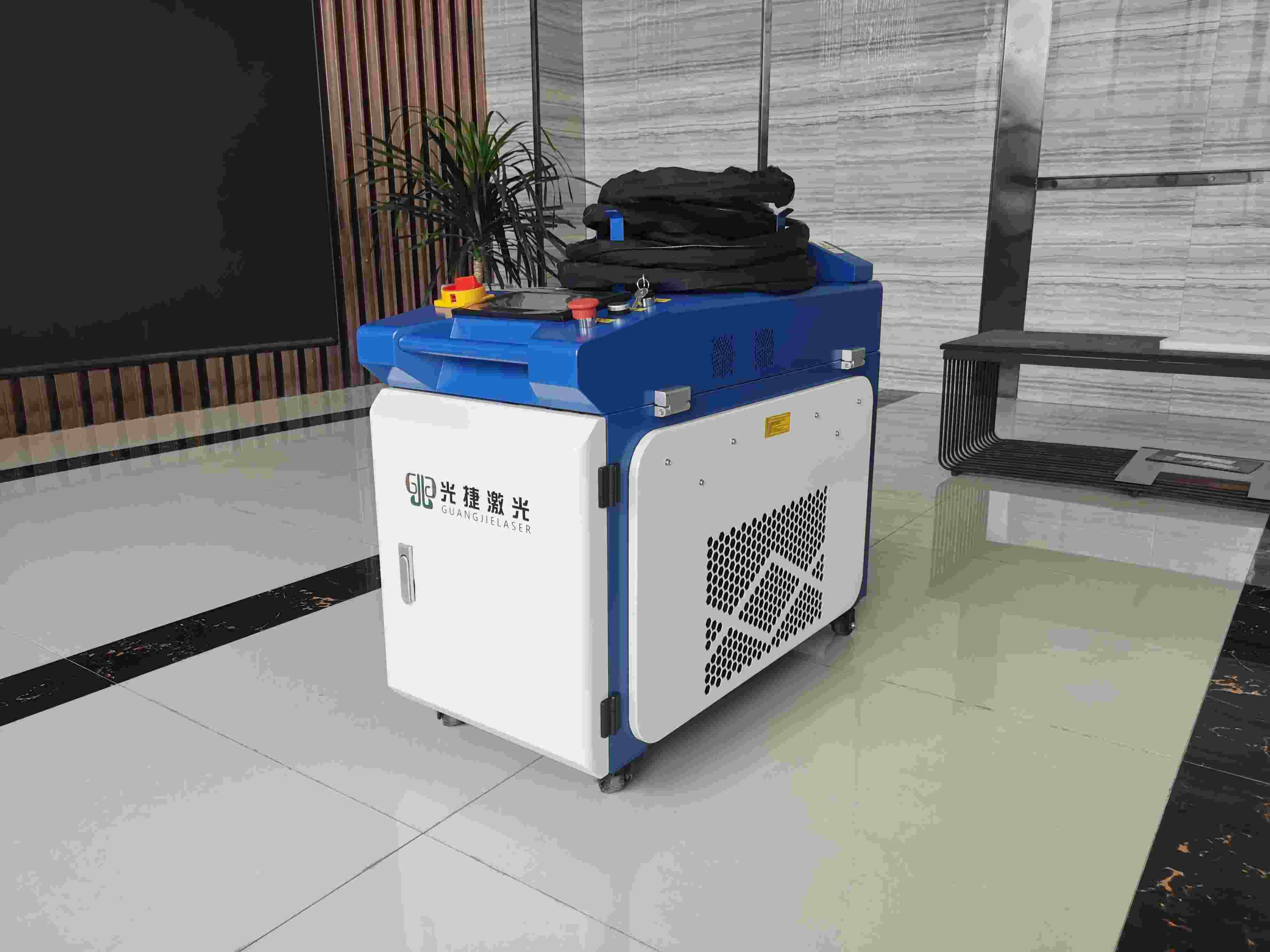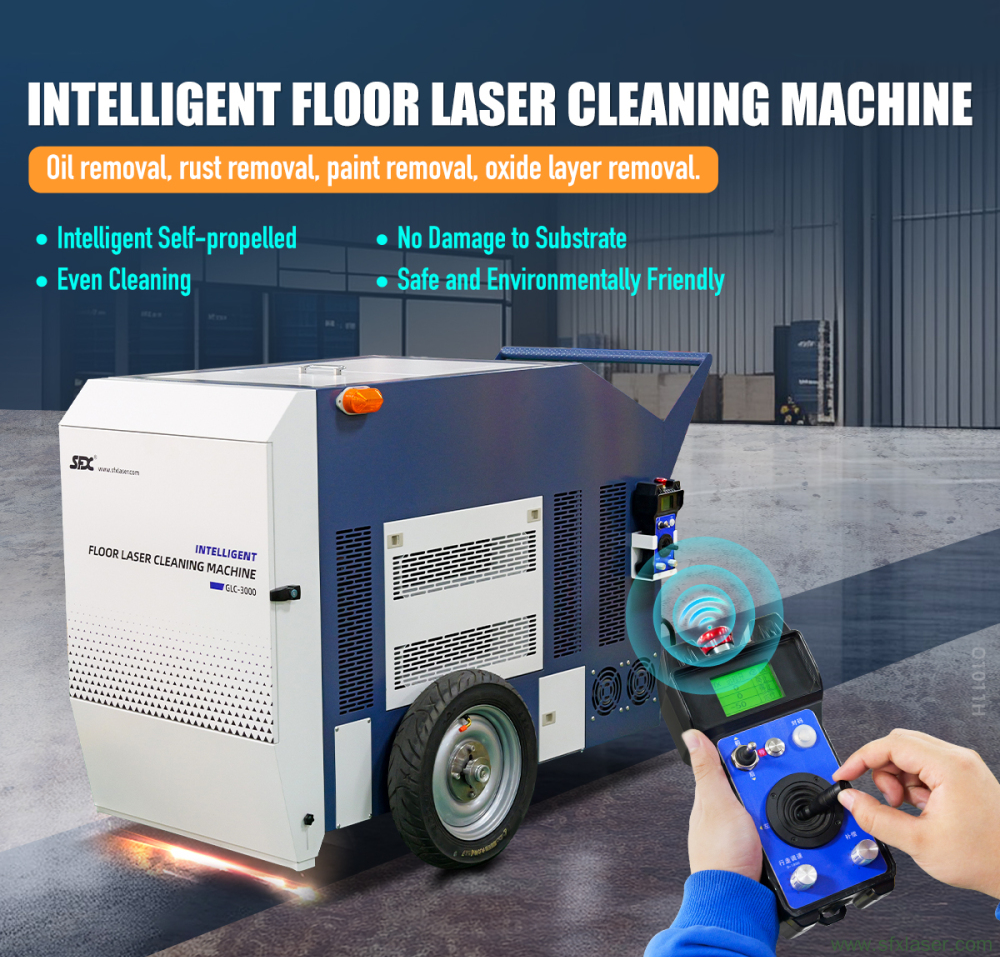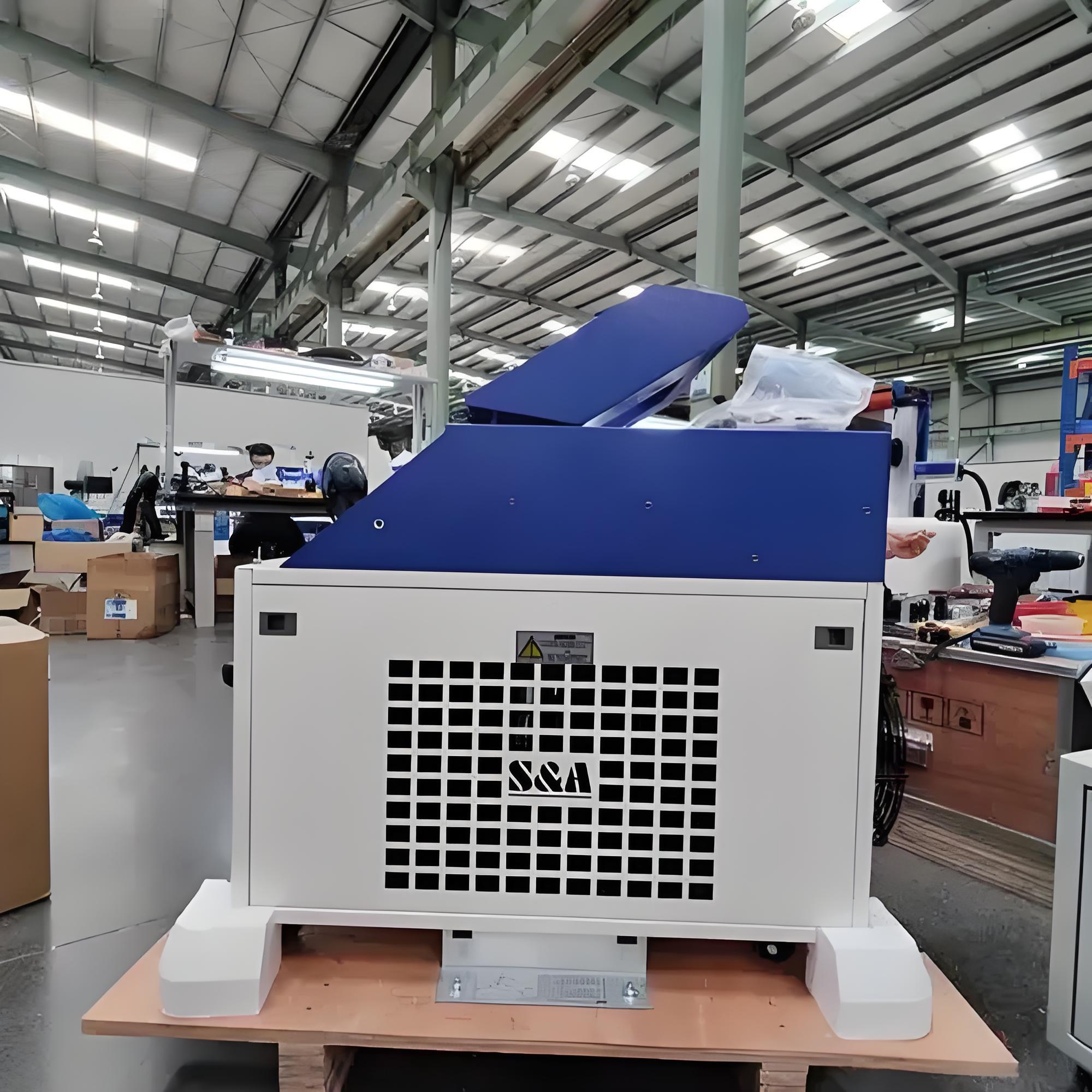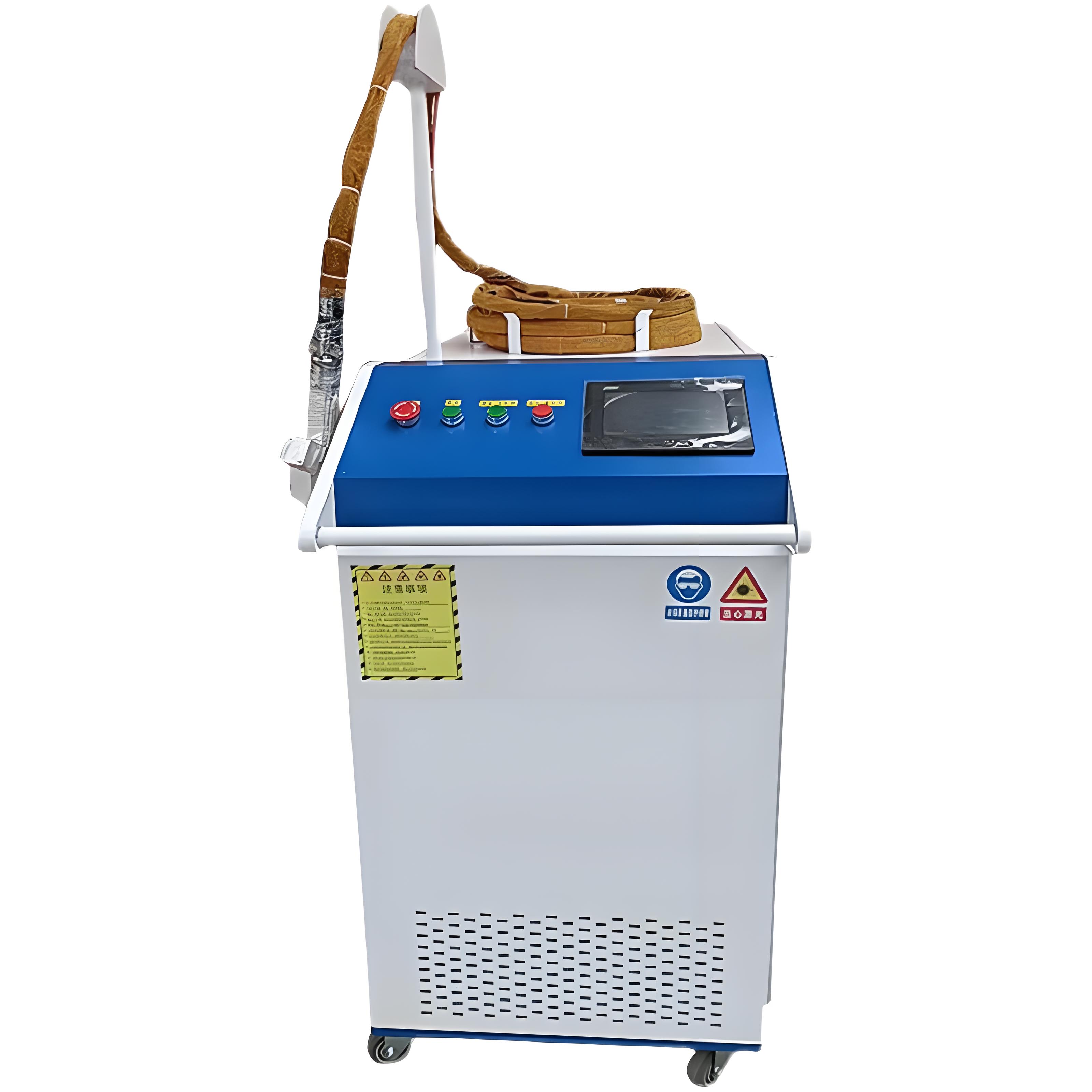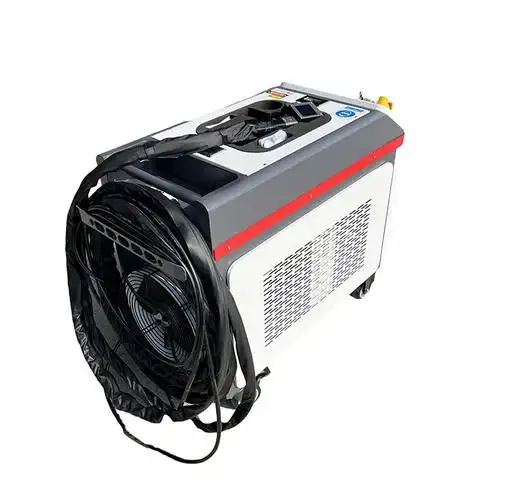Having spent years working with industrial cleaning technologies, I’ve helped businesses from small workshops to large factories navigate the ins and outs of tools like laser rust removal machines. One question that pops up frequently, especially from those new to the technology, is: “Do these machines need an air compressor to operate?” It’s a practical concern, as air compressors are common in traditional rust removal setups like sandblasting, and adding one can impact costs, space, and workflow. In this article, I’ll clarify whether laser rust removal machines require an air compressor, explore their operational needs, and share insights from my experience to help you understand if this tech fits your setup. Let’s get to the bottom of it with a hands-on perspective.
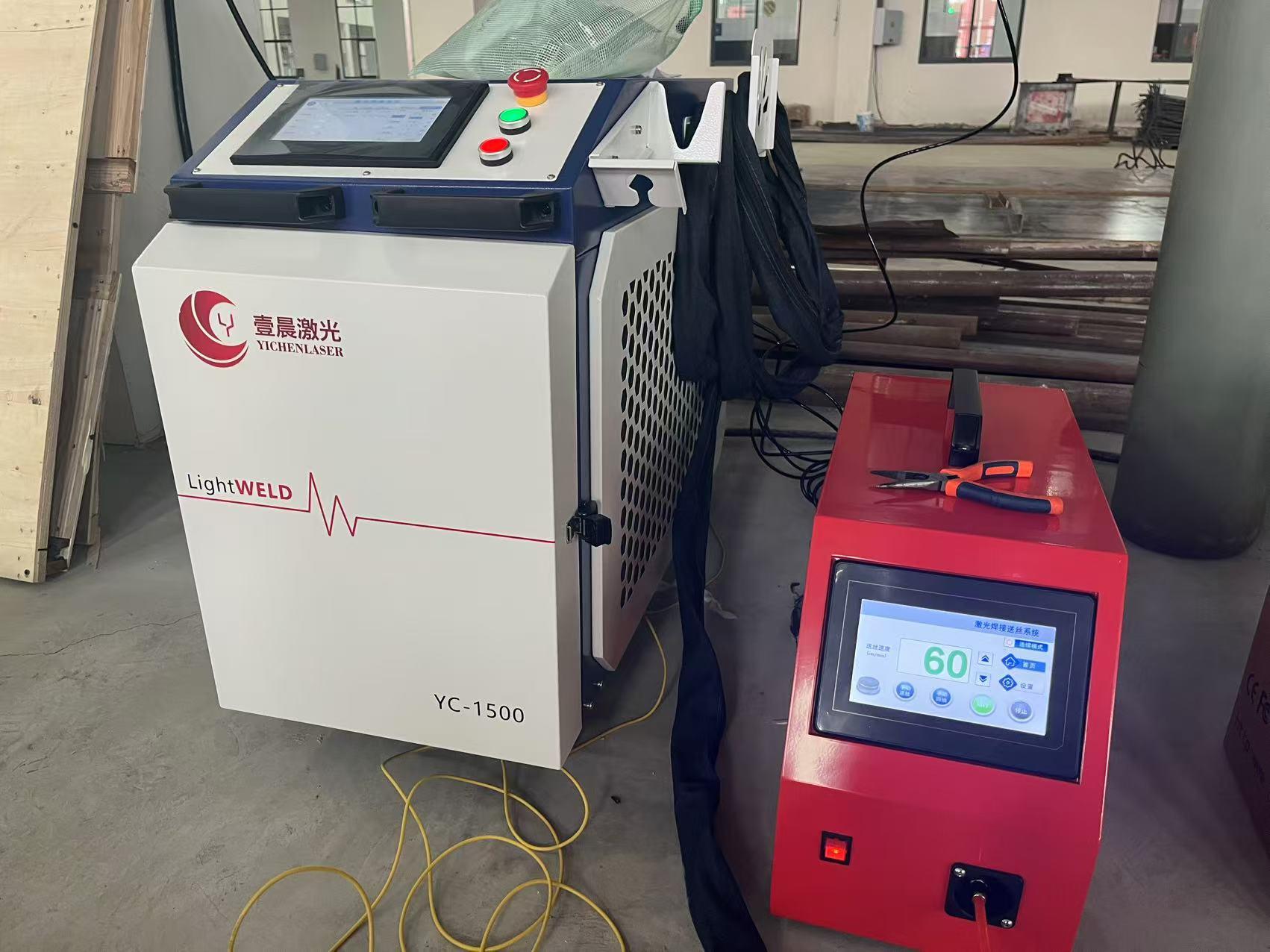
Understanding Laser Rust Removal Machines
Before tackling the air compressor question, let’s cover the basics. Laser rust removal uses a high-powered laser beam to vaporize rust, paint, or other contaminants from metal surfaces. The laser’s energy turns the rust into tiny particles or gas, leaving the base material clean without physical contact or consumables like abrasives or chemicals. It’s a dry, non-abrasive process that relies on electricity and precise optics.
I remember my first time seeing a laser rust removal machine in action at a small fabrication shop. The operator zapped rust off a steel plate in seconds, with no dust clouds or chemical smells—just a soft hum and a gleaming surface. It was a stark contrast to the noisy, messy sandblasting setups I’d seen before. But does this sleek technology depend on an air compressor like its traditional counterparts? Let’s dive in.
Do Laser Rust Removal Machines Need an Air Compressor?
The short answer is: No, laser rust removal machines typically do not require an air compressor for their core operation. Unlike sandblasting, which uses compressed air to propel abrasive media, or some water-based cleaning systems that rely on air pressure, laser rust removal is a self-contained process. The laser beam does all the work, powered by electricity, and doesn’t need compressed air to function.
However, there are nuances to consider, as I’ve learned from working with various systems and clients. In some cases, air compressors may play a supplementary role, depending on the machine’s design, accessories, or specific use case. Let’s break it down.
Core Operation: No Air Compressor Needed
The primary function of a laser rust removal machine—vaporizing rust—relies solely on the laser’s energy. The machine’s components, like the laser source, optics, and cooling system, are powered by electricity, typically through a standard 110V or 220V outlet for smaller units, or three-phase power for industrial models. No compressed air is required to generate or direct the laser beam.
I advised a small auto repair shop that was considering a laser system to replace their sandblaster. They were worried about needing to upgrade their air compressor, which was already straining their budget. I explained that their 200W laser unit would plug straight into their existing power supply, no compressor needed. They were relieved, and the system has been running smoothly without any air-related setup.
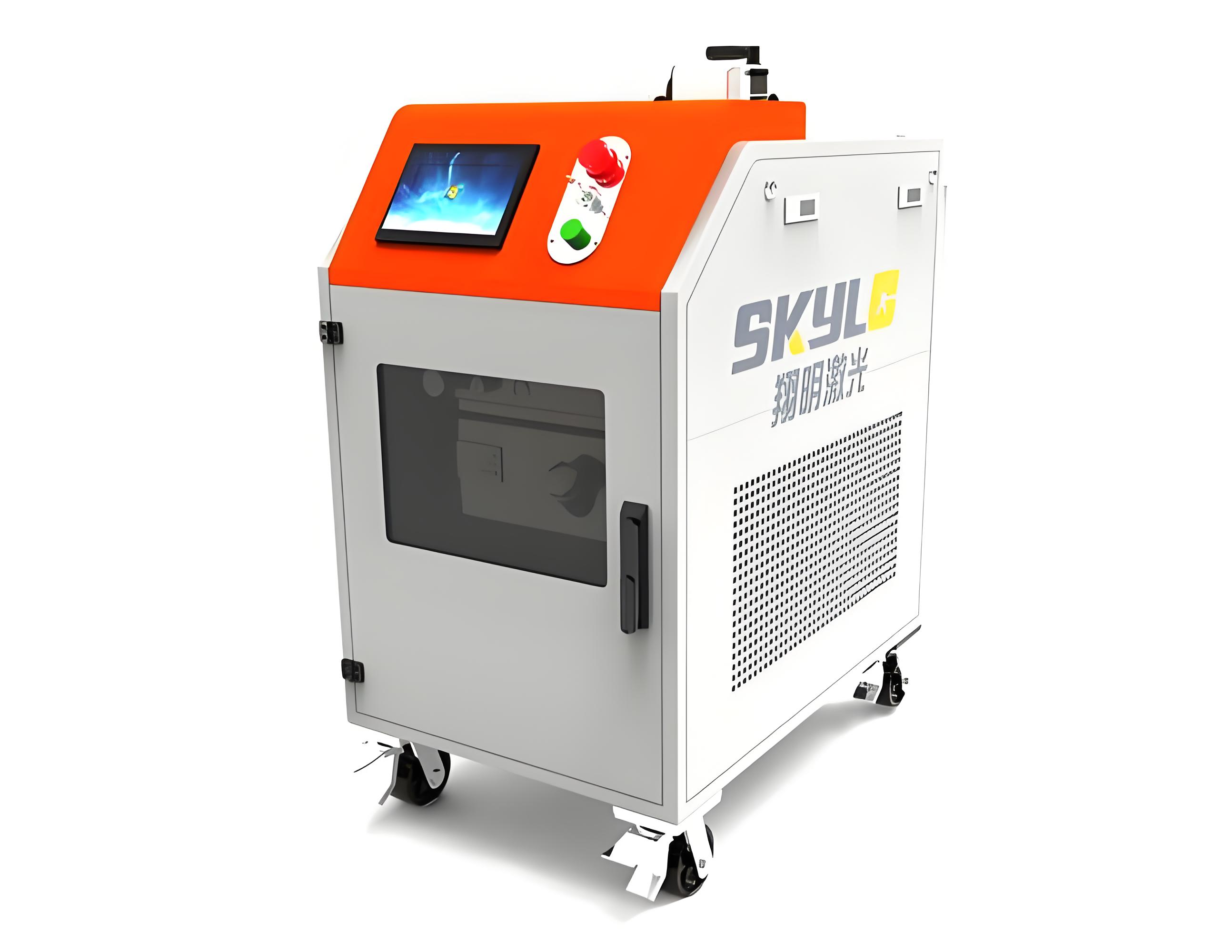
Optional Accessories: Where Air Compressors Might Come In
While the laser itself doesn’t need compressed air, some optional accessories or specific configurations may involve an air compressor for secondary functions. Here are the most common scenarios I’ve encountered:
Dust Extraction Systems: Laser rust removal produces minimal waste—mostly fine dust or gas (like iron oxide particles). High-quality machines have integrated filtration systems, such as HEPA filters or vacuum units, to capture this. Some advanced models use compressed air to assist in dust collection or to keep the laser lens clean by blowing away debris. This requires a small air compressor, but it’s not mandatory—many systems rely on electric vacuums instead.
Lens Protection: To prevent dust or particles from damaging the laser’s lens, some machines use a compressed air shield—a stream of air that creates a barrier around the lens. This is common in high-power or continuous-use systems. I saw this in a shipyard where a 1000W laser was used for heavy rust removal. They paired it with a compact air compressor to maintain lens clarity during long sessions, but it was a small, low-cost unit compared to sandblasting compressors.
Cooling Systems: Most laser rust removal machines use air cooling for low-power models (100-300W) or water cooling for higher-power units (500W+). Air-cooled systems rely on fans, not compressors, so no additional air supply is needed. Water-cooled systems also operate independently of compressed air. I’ve never seen a laser system where cooling required an air compressor, though some users mistakenly assume this based on other industrial equipment.
In my experience, these scenarios are the exception, not the rule. Most small to medium-sized laser rust removal machines—especially those suited for workshops or light industrial use—work fine without an air compressor. For example, a metal fabrication shop I worked with used a 300W handheld laser with a built-in vacuum filter, no compressor required, and it handled their workload perfectly.
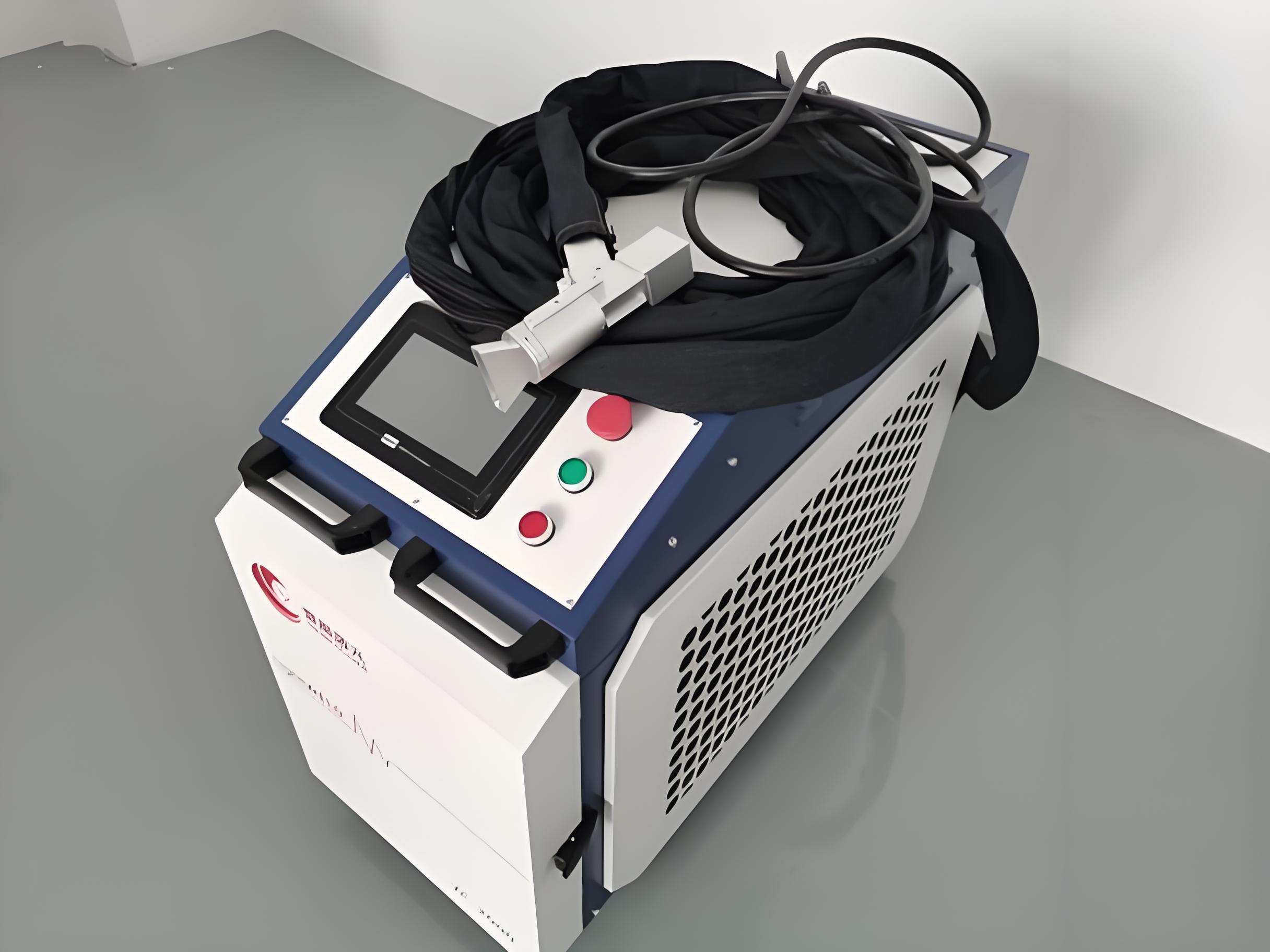
Comparing Laser Rust Removal to Compressor-Dependent Methods
To clarify why laser rust removal stands out, let’s compare it to traditional rust removal methods that often rely on air compressors. This table, based on my observations, highlights the key differences:
| Method | Laser Rust Removal | Sandblasting | High-Pressure Water Jet | Best for No Compressor |
|---|---|---|---|---|
| Air Compressor | Rarely needed, only for optional features | Required, high-pressure (80-150 PSI) | Often required for water propulsion | Laser, for simplicity |
| Setup Complexity | Simple, plug-and-play | Complex, compressor and media storage | Complex, water and compressor setup | Laser, for easy integration |
| Waste Output | Minimal dust, filtered | Large volumes of abrasive media | Wastewater, potential contaminants | Laser, for clean operation |
| Operating Cost | Low, no consumables | High, media and compressor maintenance | Moderate, water and compressor costs | Laser, for cost savings |
This table shows why laser rust removal is appealing for those looking to avoid the hassle and expense of air compressors. It’s simpler to set up, produces less waste, and keeps operating costs low, making it a practical choice for many users.
When Might an Air Compressor Be Useful?
While not essential, an air compressor can enhance laser rust removal in specific situations. Here’s what I’ve seen in practice:
Heavy-Duty Dust Management: In high-volume rust removal (e.g., cleaning large steel structures), dust can accumulate faster than a standard vacuum filter can handle. A compressed air-assisted extraction system can improve efficiency. A factory I advised used a small compressor (30 PSI) alongside their 1000W laser to boost dust collection during marathon cleaning sessions.
Lens Maintenance in Harsh Environments: In dusty or outdoor settings, compressed air can keep the laser lens free of particles, extending its lifespan. A marine repair yard I visited used a low-pressure compressor to protect their laser during hull cleaning, as salty air and rust particles were a constant issue.
Hybrid Workflows: Some shops use lasers alongside other tools (e.g., air-powered grinders or paint sprayers) that require a compressor. In these cases, the existing compressor can double as a lens-cleaning or dust-extraction aid for the laser. A small workshop I worked with already had a compressor for their tools, so they rigged it to assist their laser’s dust system, saving the cost of a separate vacuum.
However, these are optional enhancements, not requirements. Most laser rust removal machines, especially entry-level or mid-range models (100-500W), come with self-contained filtration or cooling systems that eliminate the need for a compressor. I’ve seen countless small shops operate lasers without any air compressor, keeping their setups lean and cost-effective.
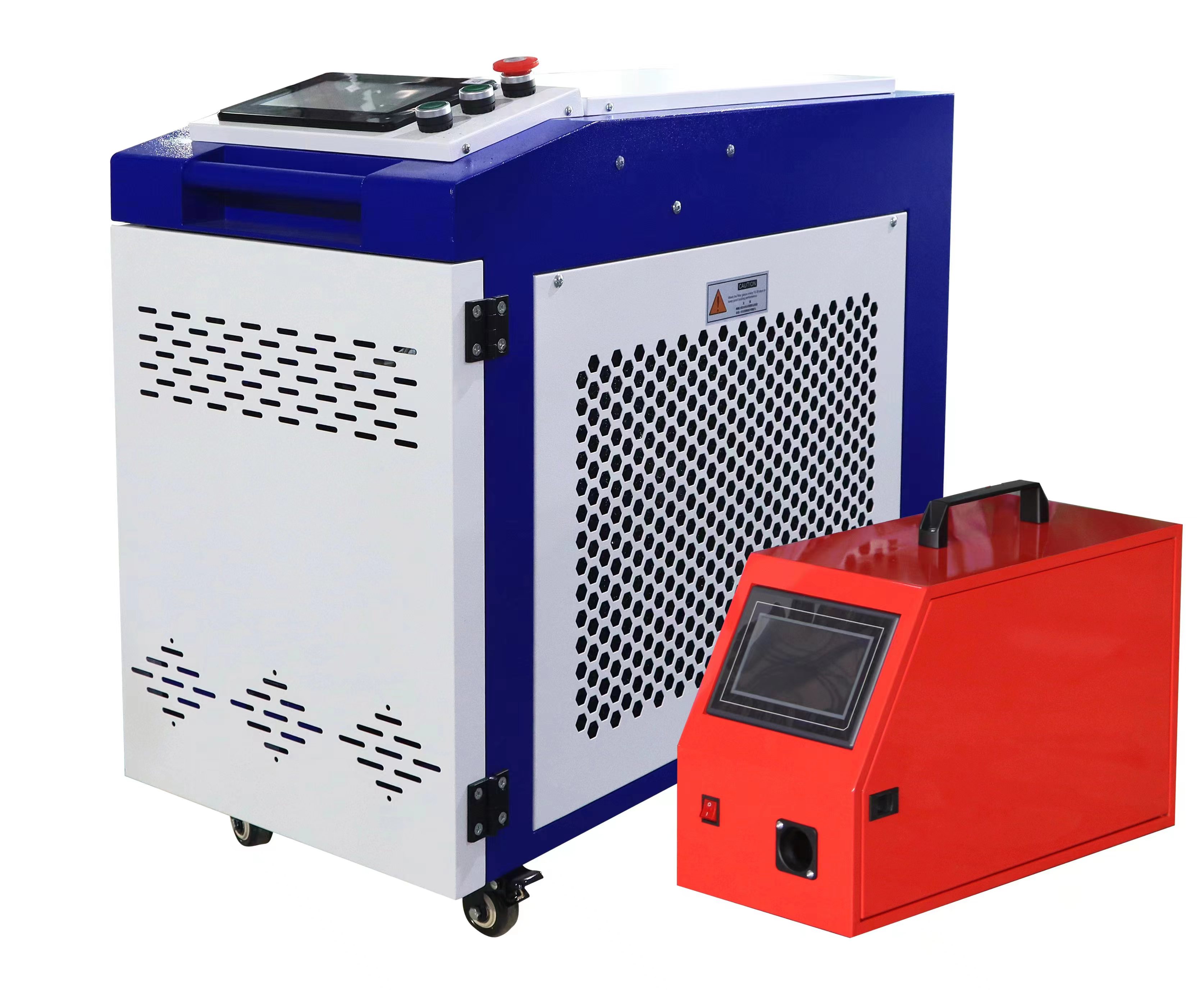
Challenges and Considerations
While laser rust removal machines are generally compressor-free, there are other factors to consider to ensure they fit your needs. Here’s what I’ve learned from helping clients:
Upfront Cost: Laser machines range from $5,000 to $50,000+, a significant investment compared to a basic sandblaster and compressor setup (often under $2,000). However, lasers save on consumables and labor over time. A small shop I advised leased a 200W laser, spreading the cost over three years, and recouped it through savings in under two.
Power Requirements: Lasers need stable electricity (110V for small units, 220V or three-phase for larger ones). If your shop lacks adequate power, you may need an electrical upgrade, which can cost $1,000-$3,000. A client of mine avoided this by choosing a low-power unit that worked with their existing outlets.
Dust Management: Without a compressor or proper filtration, dust from vaporized rust can become an issue in poorly ventilated spaces. Always choose a machine with HEPA filtration or a vacuum system. A workshop I helped learned this the hard way when their budget laser’s weak filter caused dust buildup, forcing an upgrade.
Training Needs: Operating a laser requires some training to adjust settings (e.g., power, pulse rate) for different surfaces. Without it, you risk inefficiency or damage. A half-day training session I ran for a small factory boosted their productivity by 25% by teaching operators to optimize settings.
Material Limitations: Lasers excel on metals like steel or iron but may struggle with non-metal surfaces or thick coatings. A repair shop I worked with used their laser for steel parts but kept a compressor-driven sandblaster for plastic components.
These challenges are manageable with planning, and the lack of a compressor requirement simplifies adoption for many users.
Real-World Examples
To show how laser rust removal fits into compressor-free workflows, here are examples from my experience:
1. Small Fabrication Shop
A shop making custom metal parts switched to a 300W laser to clean welds and steel plates. With no compressor needed, they plugged the unit into a standard outlet and used its built-in vacuum filter. Prep time dropped by 40%, and the workspace stayed clean.
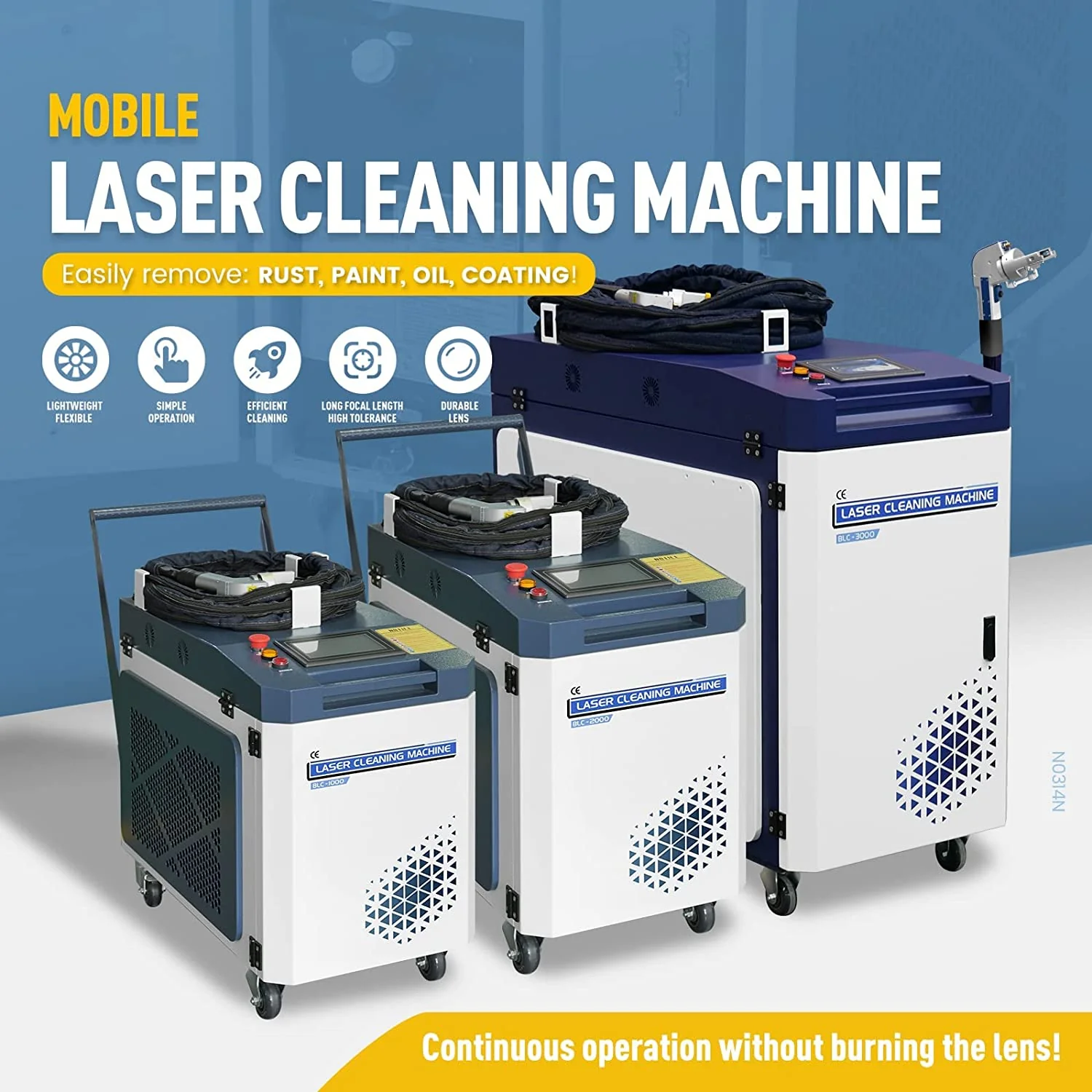
2. Auto Restoration Garage
A garage restoring classic cars used a handheld 100W laser for engine parts. No compressor was required, and the compact unit fit their small shop perfectly. They saved hours compared to manual sanding, with no abrasive waste.
3. Tool Repair Workshop
A small tool repair business adopted a 200W laser to clean rusted dies. The machine’s air-cooled system and integrated filter eliminated the need for a compressor, and they reduced maintenance costs by 30% compared to chemical cleaning.
4. Marine Equipment Maintenance
A coastal repair shop used a 500W laser for boat parts. While they added a small compressor for lens protection in salty conditions, the core rust removal process didn’t require it, and they eliminated wastewater from their old water-jet system.
Tips for Choosing a Laser Rust Removal Machine
If you’re considering a laser rust removal machine and want to keep your setup compressor-free, here’s my advice based on years of helping businesses:
Confirm Compressor-Free Operation: Choose a machine with integrated filtration (HEPA or vacuum) to avoid needing a compressor for dust management. Brands like CleanLASER or P-Laser offer models with robust built-in systems.
Match Power to Needs: For light rust or small parts, a 100-300W handheld unit is sufficient and typically air-cooled, requiring no external systems. For heavier rust, a 500W+ model may need water cooling but still no compressor.
Check Electrical Compatibility: Ensure your shop’s power supply matches the machine’s needs (110V for small units, 220V for larger ones). I’ve seen shops avoid costly upgrades by selecting lower-power models.
Invest in Filtration: Prioritize machines with HEPA filters or vacuum systems to manage dust without a compressor. A client of mine regretted a budget model with poor filtration—dust issues forced an early replacement.
Plan for Training: Budget for operator training to maximize efficiency. A short session can prevent overuse of power, saving electricity. A workshop I advised saw a 20% efficiency gain after training.
When I helped a small metal shop pick a 200W laser, we focused on a compressor-free model with strong filtration. After a quick training session, they were cleaning parts faster and cleaner than ever, with no added equipment.

The Future of Laser Rust Removal
The technology is becoming more user-friendly for compressor-free operation. Manufacturers are designing compact, self-contained units with advanced filtration, reducing reliance on external systems. I saw a prototype at a trade show that integrated AI to adjust laser settings automatically, minimizing dust and energy use—ideal for small shops avoiding complex setups.
As prices drop (entry-level models now start at $5,000), and innovations like recyclable components emerge, laser rust removal is becoming more accessible. For businesses wary of compressors’ cost and space demands, these advancements make lasers an increasingly practical choice.
Final Thoughts
Do laser rust removal machines need an air compressor? In most cases, no—their core operation is compressor-free, relying on electricity and built-in systems for dust and cooling management. While compressors can enhance specific functions (like lens protection or heavy-duty dust extraction), they’re rarely required, making lasers a streamlined, cost-effective option compared to sandblasting or water jets. With minimal waste, low operating costs, and simple setups, they’re a great fit for shops looking to simplify their workflow.
Having guided businesses through equipment decisions, I’ve seen how the right tools can save time and money. Laser rust removal offers a clean, efficient solution without the baggage of compressors—if it aligns with your needs. If you’re curious about lasers or need help choosing a system, I’m happy to share more insights.
Got questions about laser rust removal or setting up your shop? Leave a comment, and let’s talk!
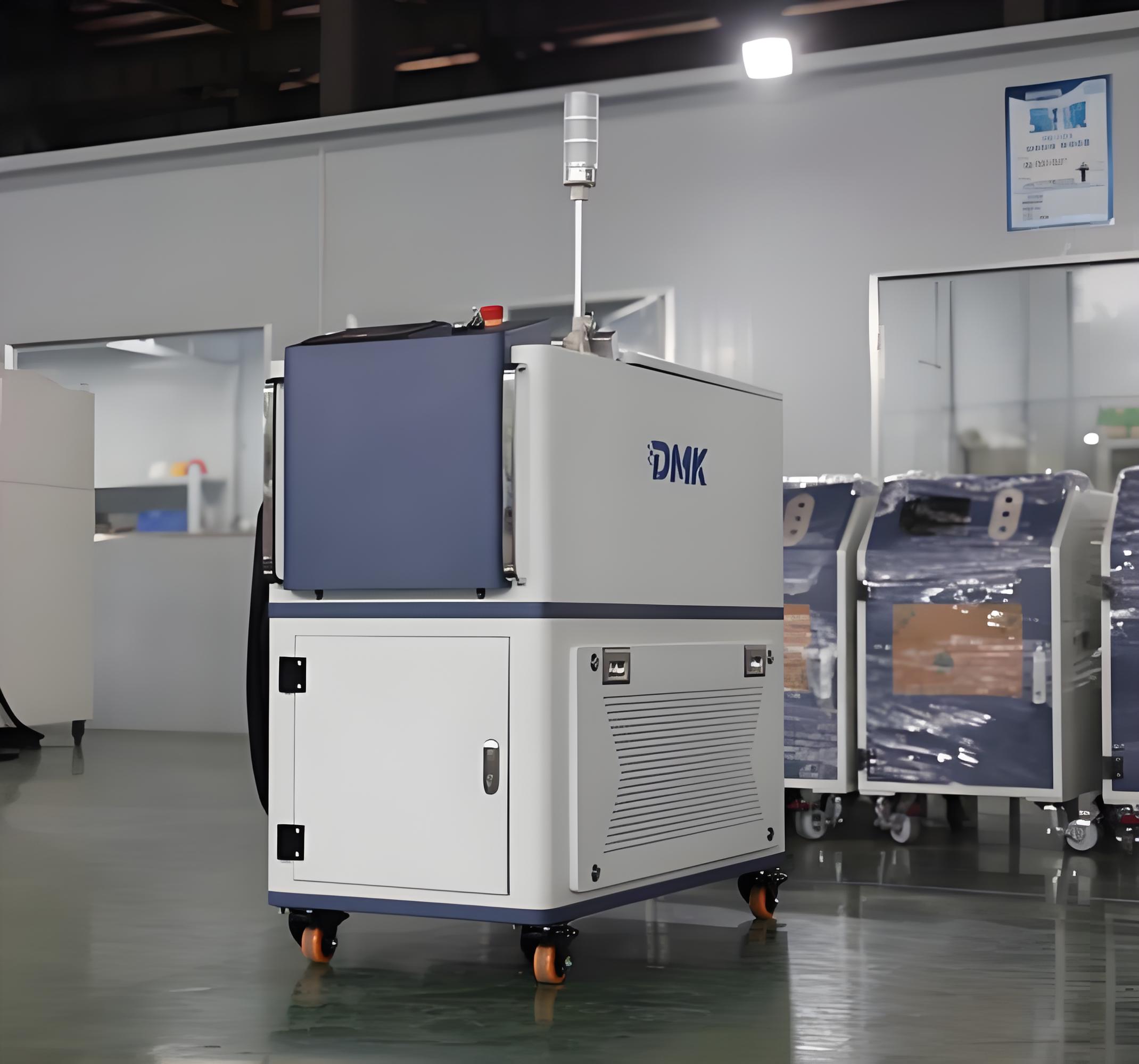
Related Questions
Q: Can a laser rust removal machine work without any external systems?
A: Yes, most models are self-contained, with built-in filtration and cooling (air or water-based). Only high-power or specialized units might use a compressor for optional features like lens protection.
Q: How does laser rust removal compare to sandblasting in terms of setup?
A: Lasers are simpler, needing only electricity and no compressor or media storage. Sandblasting requires a compressor (80-150 PSI) and space for abrasives, complicating setup.
Q: Is dust from laser rust removal a problem without a compressor?
A: Not with HEPA filtration or vacuum systems, standard in quality machines. These capture dust effectively, keeping the workspace clean without compressed air.
Q: What’s the power requirement for a laser rust removal machine?
A: Small units (100-300W) use 110V, while larger ones (500W+) may need 220V or three-phase. Check your shop’s capacity to avoid electrical upgrades.
Q: Are there budget-friendly laser rust removal machines that don’t need a compressor?
A: Yes, entry-level models (100-200W) start at $5,000-$10,000 and include filtration, making them compressor-free and ideal for small shops.

